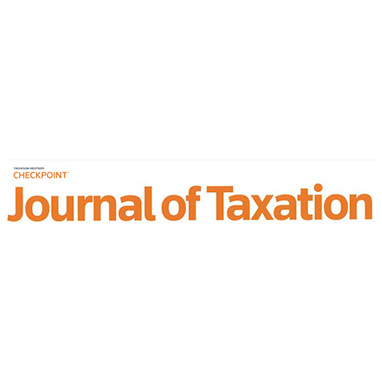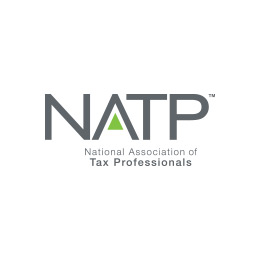Foreign companies doing business with or in the United States will typically have several reporting requirements placed on them by the IRS. These can include Subpart F, GILTI, and PFIC reporting.
Which filings your company will be responsible for will depend on the type of company involved and the income being claimed. While there are many overlapping requirements with each type of report, there are distinct differences that must be observed to avoid serious penalties. However, you might be exempt from certain requirements because of this overlap in reporting rules.
For a free case evaluation with our skilled attorneys for GILTI, Subpart F, and PFIC reporting, contact McCormick Tax Law today at (215) 630-0861.
Subpart F Rules and Requirements
The IRS Rules for Subpart F filing requirement can be extremely complicated. Essentially, Subpart F Income involves regulations pertaining to controlled foreign corporations (CFCs) that accumulate certain types of income. In most cases, it is passive income that is considered in Subpart F filings. Our attorneys for GILTI, Subpart F, and PFIC reporting can help you determine what will be considered passive income so that you can make the proper filing. If a CFC possesses Subpart F income, it is possible that a U.S. shareholder will need to pay taxes on those gains. Notably, the allocable portion of Subpart F income can be assigned to the U.S. shareholder, regardless of whether the income is ever paid out to them.
Subpart F income frequently coincides with several other pertinent matters, like GILTI and PFIC requirements. In the last few years, though, the IRS has adopted a forceful stance on Subpart F compliance, and failing to meet the reporting requirements can result in severe penalties.
Determining Whether an Entity Is a Controlled Foreign Corporation
If more than 50% of a foreign corporation’s ownership, in terms of vote or value, is held directly, indirectly, or constructively by U.S. Shareholders, the foreign corporation qualifies as a CFC. In general, each U.S. shareholder of a CFC is required to include their proportional share of specific income categories or investments in U.S. property. In most cases, domestic partnerships or S corporations will be considered CFCs. Also, a foreign partnership is regarded as a combined group of its partners for the purposes of Subpart F filings.
How to Determine Subpart F Income
According to the IRS, a foreign corporation qualifies as a CFC for a specific year if, at any point during that year, U.S. shareholders possess over 50% of the combined voting power across all classes of the corporation’s stock entitled to vote or more than 50% of the total value of all classes of the corporation’s stock. This is also known as the “value test.” A U.S. shareholder refers to a U.S. individual who owns 10% or more of the total combined voting power of all classes of stock eligible to vote in such a foreign corporation.
For Subpart F purposes, I.R.C. § 957(c) defines a U.S. person as a U.S. citizen or resident, a domestic partnership, a domestic corporation, or any estate or trust that does not qualify as a foreign estate or trust.
GILTI Rules and Requirements
Global Intangible Low-Taxed Income (GILTI) is a tax provision introduced by the Tax Cuts and Jobs Act (TCJA) in 2017, which impacts U.S. shareholders of Controlled Foreign Corporations (CFCs). GILTI aims to prevent multinational corporations from shifting their profits to low-tax jurisdictions by imposing a minimum tax on certain types of income earned by CFCs.
GILTI is a form of income that U.S. shareholders of CFCs are required to include in their taxable income. It is designed to target income that is considered to be easily shifted to low-tax jurisdictions, primarily income derived from intangible assets such as patents, trademarks, and copyrights. By imposing a minimum tax on this income, GILTI seeks to discourage businesses from moving their intellectual property and associated profits to tax havens.
Calculating GILTI Income
GILTI includes most types of income earned by a CFC, excluding effectively connected income (ECI), Subpart F income, high-taxed income excluded under the high-tax exception, dividends received from related persons, and foreign oil and gas extraction income.
GILTI is calculated as the excess of a U.S. shareholder’s net CFC-tested income over their net deemed tangible income return. The latter is determined by multiplying 10% of the shareholder’s qualified business asset investment (QBAI) by the CFC’s depreciable tangible property used in the production of tested income, minus certain interest expenses.
An example will help illustrate this complex process. Assume a U.S. shareholder owns a CFC with $1,000,000 in net tested income and $5,000,000 in QBAI. The net deemed tangible income return is calculated as 10% of $5,000,000, which equals $500,000. The GILTI inclusion for this shareholder would be $1,000,000, which is the net tested income, minus $500,000, the net deemed tangible income return, resulting in $500,000 of GILTI income.
Penalties for Non-Compliance with GILTI
Failure to comply with GILTI rules could result in substantial penalties, including fines, interest charges, and potential disallowance of foreign tax credits. In addition, non-compliant businesses may face increased scrutiny from the IRS during audits, leading to further financial and reputational risks.
PFIC Rules and Requirements
A PFIC, or passive foreign income company, is a foreign corporation that has at least 75% of its gross income during the tax year as passive income, such as dividends, interest, royalties, or capital gains. A company will also be classified as a PFIC if at least 50% of its assets during the tax year generate passive income or are held for the production of passive income. Common examples of PFICs include foreign mutual funds, foreign-based hedge funds, and foreign holding companies with predominantly passive investments.
How PFIC Assets Are Determined
To determine PFIC status with the asset test, a foreign corporation can utilize an adjusted basis if it is not publicly traded for the tax year and is either a controlled foreign corporation or chooses to use an adjusted basis. Publicly traded corporations, however, must use fair market value when utilizing the asset test to determine PFIC status.
The Look-Thru Rule
The “look-thru” rule is intended to prevent the artificial creation of PFIC status. By allowing U.S. shareholders to look through the assets and income of certain subsidiaries, the rule provides a more accurate representation of the parent corporation’s economic activities and reduces the risk of unintended PFIC classification.
The CFC Overlap Rule
This rule prevents double taxation of certain income for U.S. shareholders who are subject to both PFIC and CFC rules. The rule acknowledges that some foreign corporations might meet the criteria for both PFIC and CFC status, which could potentially subject their U.S. shareholders to adverse tax consequences under both tax rules.
Under the CFC overlap rule, if a U.S. shareholder owns stock in a foreign corporation that is both a CFC and a PFIC and the shareholder is also subject to the Subpart F inclusion rules, the PFIC rules will not apply to the shareholder’s income from the foreign corporation for that tax year. In other words, the income is treated under the Subpart F rules, and the more punitive PFIC rules are disregarded for that specific income.
Our Attorneys for GILTI, Subpart F, and PFIC Reporting Can Help
Our attorneys for GILTI, Subpart F, and PFIC reporting can help you with a free case evaluation when you call McCormick Tax Law at (215) 630-0861.










